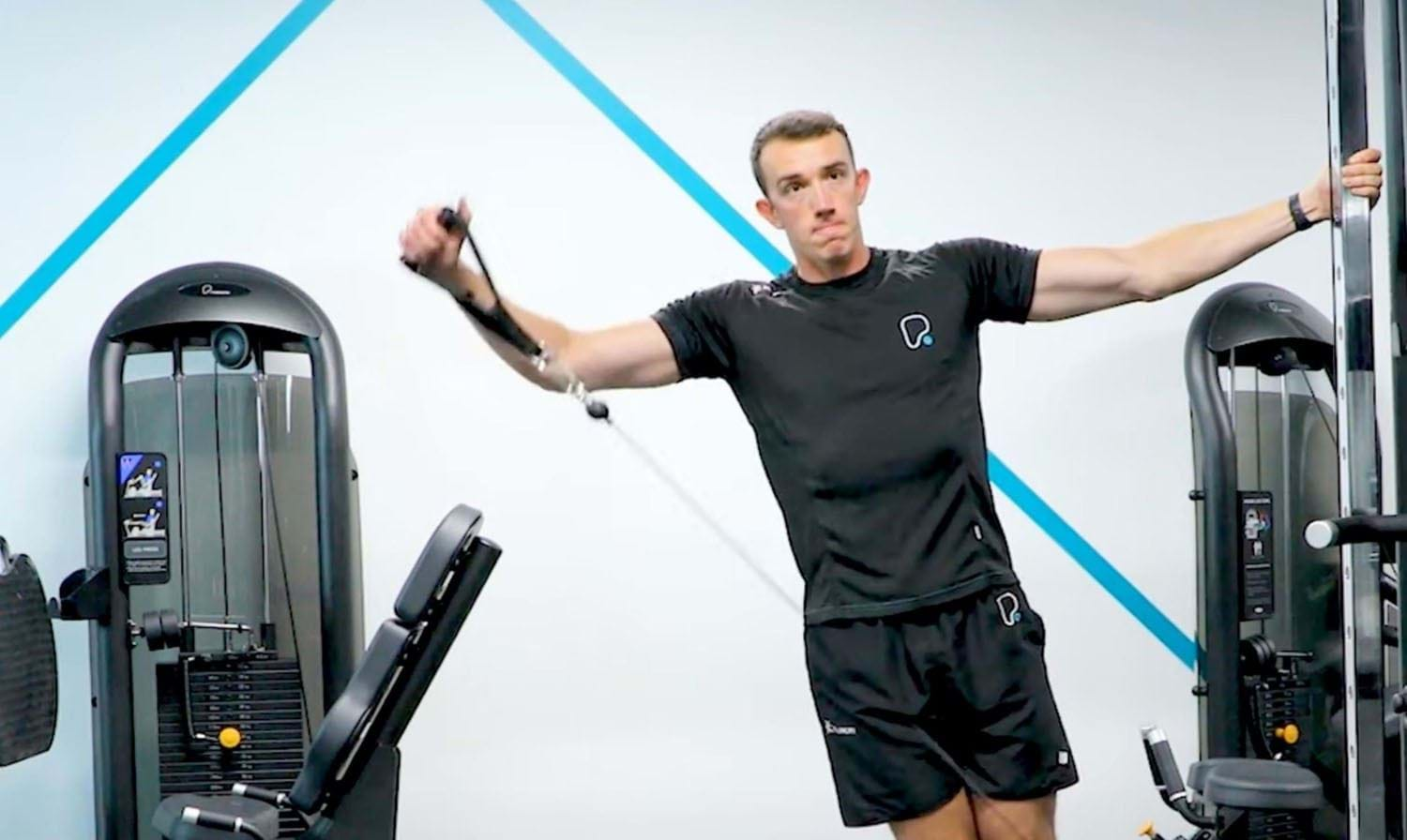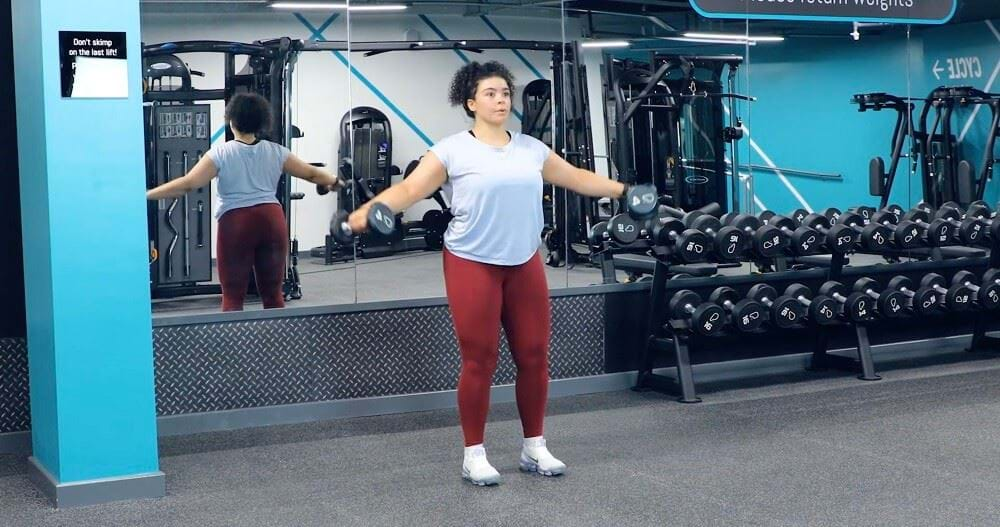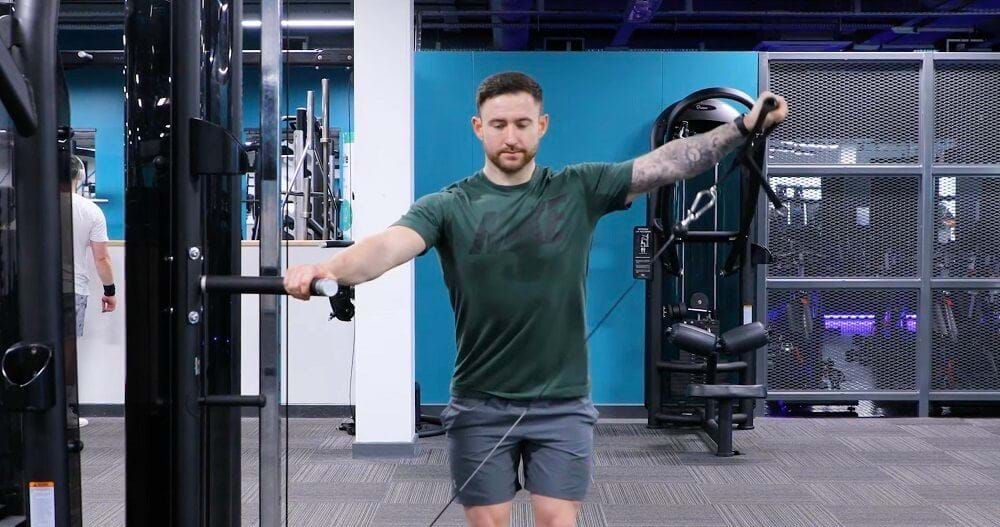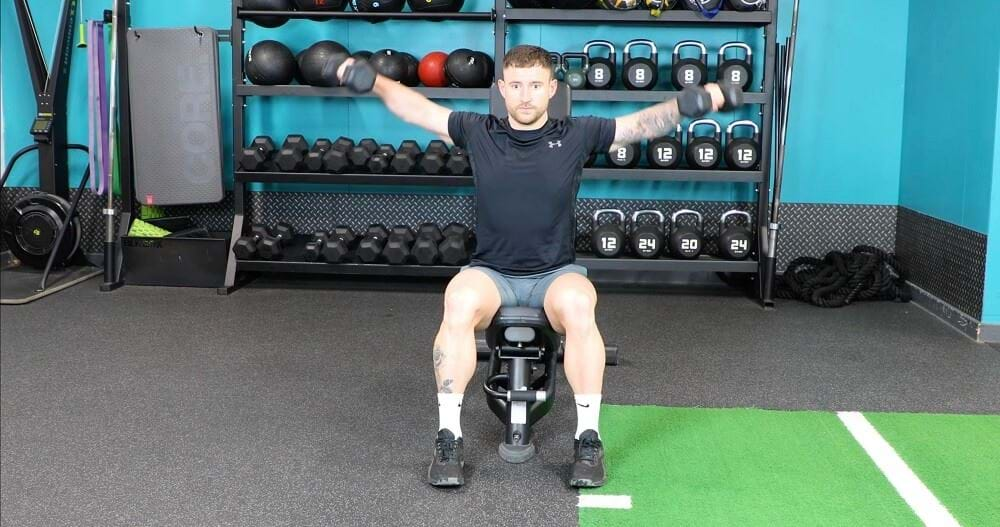Lateral Raises
What are Lateral Raises

The lateral raise is a strength training isolation exercise that works the shoulders (specifically the lateral deltoids), with the trapezius (upper back) supporting by stabilising the exercise.
This exercise involves lifting weights away from your body, out to the side. It's an exercise which looks much easier than it is, and even using light weights for lateral raises can help to build strength and size. An added bonus is that lat raises can improve the range of motion in your shoulder, and help to stabilise the shoulders.
Check out our other arm and shoulder exercises: Bicep curls, Forearm and grip exercises, Front raises, Rear delt exercises, Shoulder presses, Tricep extensions, Upright rows
Commonly asked questions on lateral raises
There are a few ways to make lat raises harder. The first step is to make sure you have the form correct, and are recruiting the lat delts to raise the weights rather than swinging them up. From there, you can increase the weight, slow down the exercise, or try switching to kettlebells or the cable machine.
While you could technically do lat raises everyday, we wouldn't advise it. A strength workout can cause micro tears in the muscles, so it's best to wait at least a day between working the same muscle group twice. If your goal is bigger shoulders, focus on training them at least twice a week with a variety of shoulder exercises, and eat enough calories and protein to help your body recover.
Lateral raises are great for strengthening the lateral deltoids, but this is only one of three muscles that make up the deltoids. It's important to also strengthen the anterior deltoids and posterior deltoids, as well as other muscles in the shoulders, chest, and upper back. Try a mix of compound exercises like the shoulder press along with isolation exercises like front raises and rear delt flyes.
When doing lat raises, you should feel tension or a slight burn in your lateral deltoids, which are positioned on the side/ middle of your shoulders.
Lateral raise tips
- Form is much more important than lifting heavy for this exercise. Choose a weight which you can move in a controlled, smooth motion, and avoid using momentum to lift the weights.
- At the top of the movement, lat raises should be around 20 degrees in front of your chest, not in a straight line, in order to protect the rotator cuff.
- Your arms only need to go as high as parallel with your shoulders. However, if your mobility allows, going higher can be a good way to work your traps.
Lateral raise variations

Dumbbell lateral raises are a great choice for all levels as the weight can be changed to match your strength and training goals.

Cable lateral raises are a versatile variation with the option of altering the angle, height, and hand position.

Seated dumbbell lateral raises stabilise the core and isolate the shoulders to target the lateral deltoid muscles.
If you’re not sure if any of the above exercises are suitable for you, please consult your doctor before you start it. Need guidance on how to perform the exercise? Ask a personal trainer at your gym.